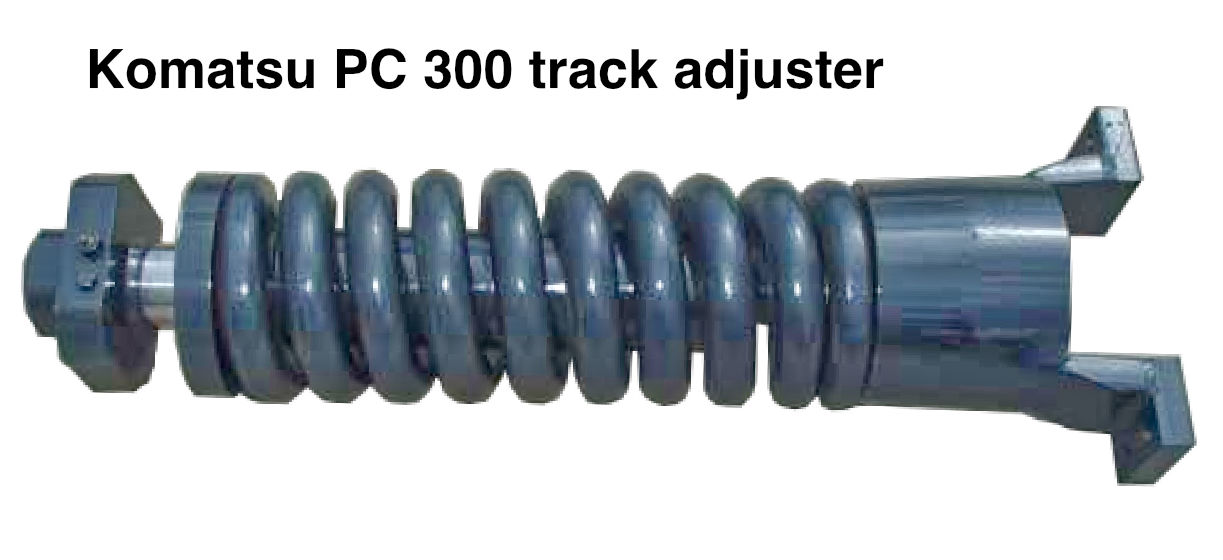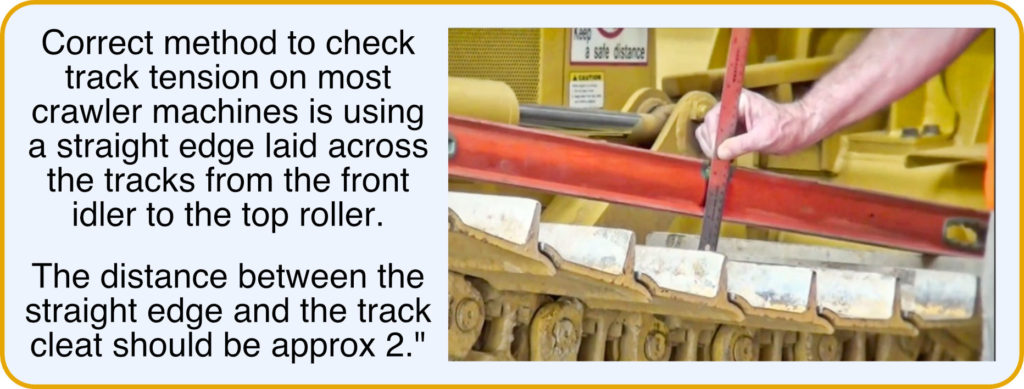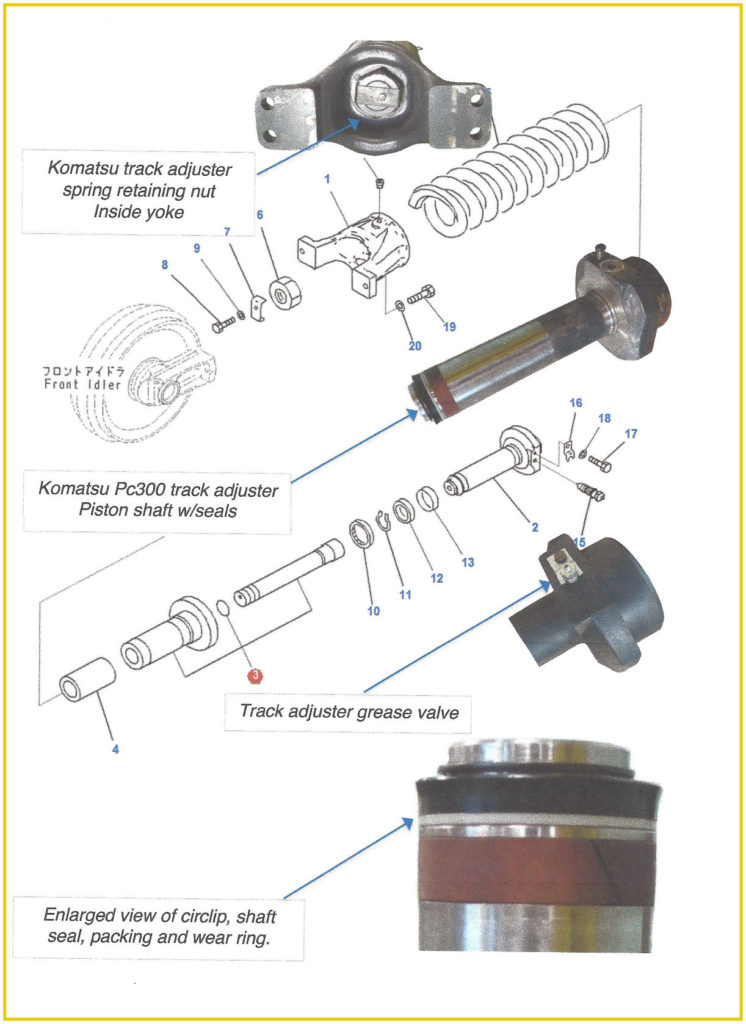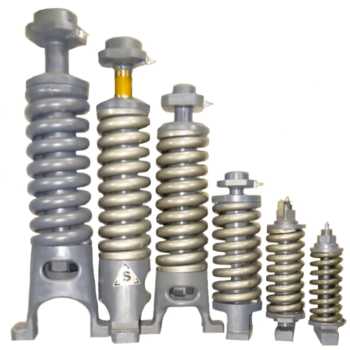
It is worth noting that approximately 20% of the cost of a crawler based machine is the undercarriage assembly. More importantly, nearly 50 percent of your maintenance costs will go into maintaining that assembly due to the harsh, high wear work environment the undercarriage is subjected to.
There only two notable operating factors that are controllable that can optimize undercarriage wear/costs, operator skill and maintaining the correct chain tension for the operating conditions
If the track tension s too loose tracks can de track or de rail. Operated too tight due to over packing with dirt or mud, the undercarriage is working with high loading on all the undercarriage components and will cause power loss of the machine and high wear rate of:
- Internal joints,
- Links and track bushings,
- Idler and roller wear,
- Sprockets,
Refer to your operator’s manual for track inspection and tensioning procedures.
A general rule of thumb guide is 2” of track chain droop, measured from the top of the lowest track pad to a straight edge positioned across the top of the track pads from the front idler to the top idler.

Remember to adjust track tension to the operating conditions. As packing conditions increase, the adjusted track tension should decrease.
When a track adjuster fails, repairs are required as soon as practical to:
- Reduce the onset of heavy premature wear or breakage.
- Reduce the risk of de railing a track.
- Reduce unplanned maintenance costs and downtime.
Tensioner Function
Track tension is hydraulically achieved through a track adjuster, which is a spring loaded hydraulic cylinder positioned behind and bolted to the front idler. Recommended OEM tension adjustments are achieved by, pumping grease into, or draining grease from, the track adjuster valve.
Periodical visual checks of the tensioner for any signs of leakage is important and if leaks are detected bring your machine in for repair as soon as possible.
Track Adjuster failures
Function of a track adjuster assy is not only used to push the idler wheel forward to increase tension / reduce slack or droop but also to protect the undercarriage from damage when the tractor contact a large solid object i.e. rocks, trees, deep holes, broken ground, stumps etc. Shock loadings are absorbed on impact by the heavy recoil spring which is preloaded to between 50 to +100 tons, depending machine size.
Common track adjuster failures are:
- Leaking seals
- Seized piston
- Bent shaft
- Broken spring
When a track adjuster fails the undercarriage will start to suffer an excessive wear condition that will continue until something breaks, exacerbating the problem, adding downtime and expense to the repair bill. It is advisable to carry our remedial repairs as soon as practical.
Track adjuster repairs and maintenance
Early warning signs of a failing / failed tensioner is either by routine inspection or when the correct track tension cannot be achieved. Either the grease is getting in but pressure leaking past the seals or it is escaping elsewhere. Other visual signs may also identify a broken or cracked spring. These conditions can be due to various reasons, such as:
- Grease gun pressure not sufficient.
- Grease valve blocked
- A cracked cylinder or welded joint
- Seals worn or broken
- Grease evident around cylinder
- Damaged piston or cylinder.
- Idler jammed in rails.
- A loose track
- Broken spring
Should the spring be cracked or broken consult your nearest dealer to arrange them to e install the new replacement spring. They will have the necessary expertise and heavy hydraulic pressing equipment to undertake the installation safely.
Safety Alert: At no point should the spring retaining nut be tampered with unless by a trained technician working with a100 t press in a controlled environment. Severe or fatal injuries may result if the spring is otherwise released.
All repairs except changing the grease valve, needs the track to be unlinked and the idler and track adjust assembly rolled out of the track frame for further disassembly.
The piston shaft (#2) needs to be pulled out from the cylinder to check seals and packing for wear or damage. With Komatsu track adjusters or Idler cushions as they are referred to, there is nothing to undo to pull out the shaft. One out all worn parts should be replaced and the old grease inside the cylinder (#3) (cleaned out)
Hydraulic Cylinder
It is not uncommon to find the rods or shafts / pistons seized inside the cylinder and wont budge. This can be caused by ingress of dirt and water into the cylinder or the rod is bent, jamming the piston or shaft. This will elevate the degree of difficulty to the disassembly procedure, and will often require special tools, and expertise to resolve.
With the above failure condition, damage to the sealing surface of the cylinder bore is generally inevitable. Sometimes the cylinder bore surface can be restored with honing or if not a replacement cylinder will be the immediate solution.If this is the case, a trip to the local dealer will be necessary to purchase another cylinder and to remove and reinstall the recoil spring.
With regard to any maintenance involving the spring, the familiar disclaimer – “Don’t try this at home folks” applies perfectly to this aspect of the job.
Below is an exploded view of a typical Komatsu excavator track adjuster or idler cushion as they are referred to in the parts manual.

Planning the repair
The purpose of preparing this blog on track adjusters was to provide some information for anyone who has a maintenance issue with one and wants to know more about the subject before they attempt to remove and repair.
As part of good maintenance planning, it is always the objective to have all the possibilities and scenarios of the job covered before taking the machine out of service.
One critical aspect is the importance of getting the correct parts required to cover all the possible repair situations. This can be a tough call as these parts aren’t cheap when you start thinking about having a new hydraulic cylinder there in case yours is found to be trashed when disassembled.
Also there may be additional time, travel and costs to get your assembly to the dealers who could be many miles from the job if you need to get them to remove, re install / replace the spring.
It is always diligent before you start to see what parts your local dealer has on the shelf in case you need to replace everything.
You may be surprised to learn that all they carry is the seals off the shelf.
Make sure you have all the heavy tools and slings required in case you find that the piston / shaft is seized. In the case of an excavator the bucket can do a lot of the heavy work and the pulling power force.
Options
Over the past couple of years the industry has seen a trend that has swung sharply away from remove and repair track adjusters, to remove and replace them with an aftermarket alternative.
The units themselves are as good or better than OEM quality, come with a manufacture defects warranty and are less than a third of the price of a complete rebuild using genuine parts but without the downtime. In fact the genuine springs are only fractionally higher priced than a complete aftermarket assembly.
With those economics combined with the concern about parts availability, extended downtime and the spring safety aspect, there isn’t any downside for the aftermarket replacement methodology. Hence we carry a large range of Komatsu track adjusters in stock for excavators (PC 45’s through to PC 800’s) and bulldozers (D 51’s to D 65’s).
One thing is clear though, the remove and replacement message is getting out there as we sell the heck out of em.


Good article
Thanks for your comment and your business Bill